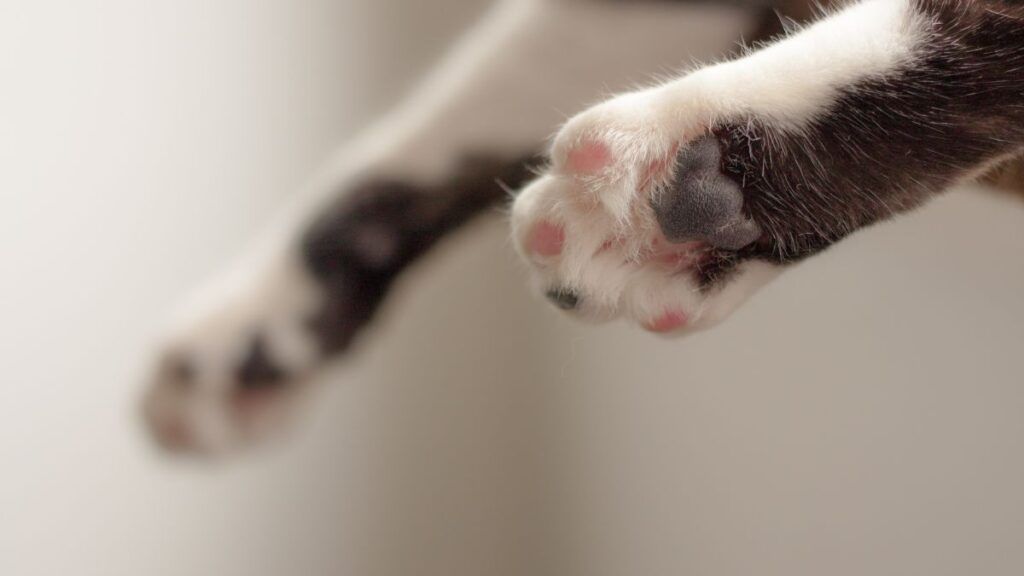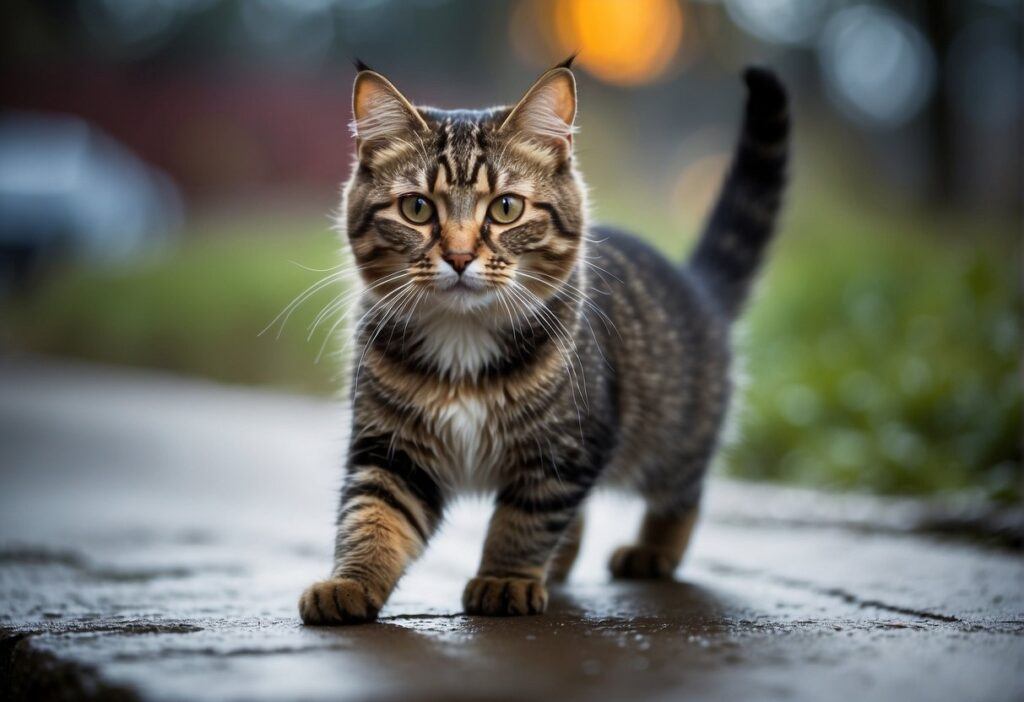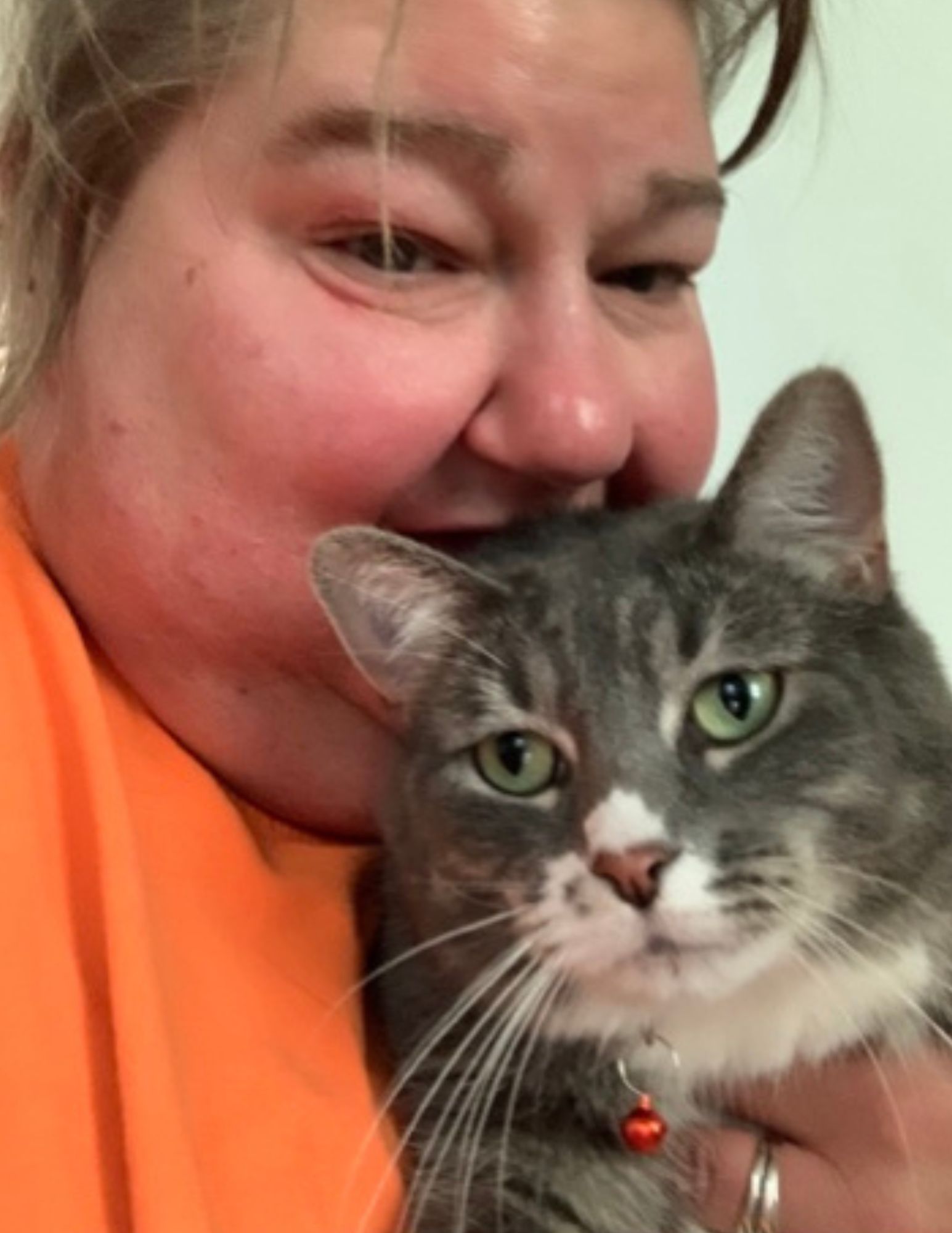Witnessing your cats shake as they navigate around the litter box or while walking can be concerning for cat owners.
This subtle shake, observed in cats of all ages—from a playful younger cat to serene older ones—might be more than a quirk.
It could indicate various health problems, including medical conditions affecting the cat’s legs, spinal cord, or nervous system disorders.
This article provides insights for cat owners on identifying when this behavior in healthy adult cats signals a mere habit rather than a severe health concern.
We will explore and discuss the causes behind cat shakes and learn how to support your feline friend’s well-being and ensure they stride confidently, regardless of age.
Understanding Cat Paw Shaking

Cat paw shaking when walking can be a normal behavior or a sign of an issue. It’s important to distinguish between habitual actions and those requiring a veterinarian’s attention.
Identifying Norms and Aberrations
Normal Behaviors: Cats often shake their paws to remove debris or after stepping on something uncomfortable.
Observing your feline friend’s movements will help you understand their typical behavior.
- Abnormal Signs: Look for any of the following:
- Excessive paw shaking
- Limping or avoiding the use of a paw
- Swelling or visible injury on paw pads
- Behavioral changes accompanying the paw-shaking
Note: Subtle changes in behavior can indicate a problem. Consistency is key in determining normal versus worrisome paw shaking.
Behavioral vs. Medical Causes
Behavioral Causes:
- Dislike of wet or sticky surfaces
- Removing irritants from paws, such as litter or stickers
Medical Causes:
- Injuries including cuts, thorns, or fractures
- Dermatological issues like infections, allergies, or parasites
- Neurological disorders affecting the cat’s movements
Investigation:
- Front Paws vs. Rear Paws:
- Are both front paws affected?
- Does the shaking apply to the rear paws as well?
- Environmental Factors:
- Changes in walking surfaces
- Recent exposure to indoor or outdoor irritants
Seek professional evaluation if shaking is persistent, severe, or accompanied by other health concerns.
Common Health Issues Leading to Paw Shaking

When a cat shakes its paws while walking, it may indicate underlying health issues. This section examines the musculoskeletal, neurological, and other medical conditions that can lead to such behavior.
Musculoskeletal and Neurological Disorders
Musculoskeletal issues, such as trauma or arthritis, can cause discomfort in a cat’s paws, leading to shaking.
Neurological disorders that affect the nervous system, like diabetic neuropathy—a complication of feline diabetes—can also result in paw shaking.
Conditions stemming from kidney disease or kidney failure may contribute to gait and paw movement abnormalities due to the influence on overall body chemistry and nerve function.
Diseases and Infections
A variety of infections can prompt a cat to shake its paws.
Ear infections of the inner or middle ear can disrupt a cat’s balance and coordination, leading to unusual movements, including paw shaking.
Bacterial infections might inflame the paw directly, causing pain and leading to shaking.
Further, diseases that result in low blood sugar or heart disease can indirectly cause paw shaking by affecting overall health and energy levels.
Environmental and Behavioral Factors

When a cat shakes its paws while walking, various environmental and behavioral factors may influence this behavior.
Two primary influences include the presence of external irritants and the impact of stress-related behavioral responses.
External Irritants and Injuries
Cats are meticulous groomers and react instinctively to discomfort on their paws.
Substances like toxic plants or chemicals found in their immediate surroundings, such as near their food bowl or water bowl, can adhere to their paws.
Should a cat step on these irritants, it may shake its paws to dislodge the unwelcome material.
Additionally, open windows can allow pollen or other outdoor allergens to settle indoors, potentially irritating.
Physical factors like insect or flea bites may also prompt a cat to shake its paws due to the localized pain or itchiness these pests can cause.
- Common irritants include:
- Chemicals from cleaning agents
- Pollen or allergens from open windows
- Residues near food and water sources
- Physical factors:
- Insect and flea bites
- Thorns or sharp objects causing minor injuries
Stress-Related Behavioral Responses
Behavioral responses to stress can lead to various unusual activities, including paw shaking.
Cats may shake their paws following a traumatic experience as a self-soothing mechanism or an attempt to distance themselves from the memory of the stressor.
Environmental changes, such as the introduction of new pets, moving to a new home, or loud noises, can lead to anxiety-related behaviors.
These stress responses could lead to physical manifestations, including paw shaking.
- Stress-inducing situations include:
- New pets in the home
- Relocation or changes in the home environment
- Loud and unfamiliar noises
- Signs of stress in cats:
- Excessive paw shaking or licking
- Other stress-related behaviors like hiding or avoidance
Diagnostic Evaluation and Treatment

A thorough diagnostic evaluation is critical when a cat exhibits shaking or paw problems while walking. The process often leads to a tailored treatment plan addressing the cat’s unique condition.
Veterinary Diagnostic Techniques
Veterinary professionals may initiate blood tests to ascertain glucose levels and check for electrolyte imbalances that could affect a cat’s gait.
Diagnostic Tests Employed:
- Blood Work: To identify underlying systemic issues.
- Imaging: X-rays or MRI if a physical injury is suspected.
- Neurological Exams: To assess nerve function and motor coordination.
These tests help confirm the diagnosis and rule out diabetes, neurological disorders, or injuries.
Creating an Effective Treatment Plan
Once diagnostic tests have been interpreted, a treatment plan is outlined. This plan may include:
- Supportive Care: For hydration, nutrition, and rest.
- Specific Treatment: Targeting identified illnesses, such as administering anti-nausea medications if required.
- Symptom Management: Includes practical measures such as padded bedding to relieve walking discomfort.
The proposed treatment will depend on the cause and severity of the symptoms and the cat’s general health. Regular follow-up is essential to monitor the cat’s response to the treatment and adjust the plan if necessary.
Caring for an Affected Cat

When a cat experiences difficulty walking or frequently shakes its paws, it’s vital for caregivers to create a supportive environment.
Appropriate home care strategies and measures to support mobility can impact their quality of life.
Home Care Strategies
- Observation: Carefully monitor the cat’s behavior to identify specific discomforts in its legs or spine.
- Environmental Adjustments: Ensure living spaces are safe and accessible. Remove potential hazards that may cause further injury.
- Veterinary Guidance: Work closely with a veterinarian to determine if underlying health issues are causing the problems. Implement any recommended treatments.
- Nutrition: Provide a balanced diet tailored to the cat’s age and health needs, which may help manage body weight and support joint health.
Supporting Cat Mobility and Comfort
- Assistive Devices: Consider using pet ramps or stairs to help cats with limited mobility comfortably access their favorite areas.
- Regular Check-Ups: Regular veterinary visits are important, especially for older or elderly cats, to monitor their health status and mobility concerns.
- Physical Therapy: Engage in recommended physical therapy exercises to strengthen the cat’s body and improve movement.
- Comfortable Resting Areas: Create supportive and soft resting places to alleviate pressure on the cat’s joints.

Meet Ann Haasnoot, the passionate founder of CatFurLife.com. A lifelong cat lover from Wisconsin, Ann combines her extensive feline behavior and care knowledge with her love for writing. On her website, she shares invaluable insights about cat breeds, care tips, and her experiences with her beloved furbaby, aiming to deepen the bond between cats and their human companions.

